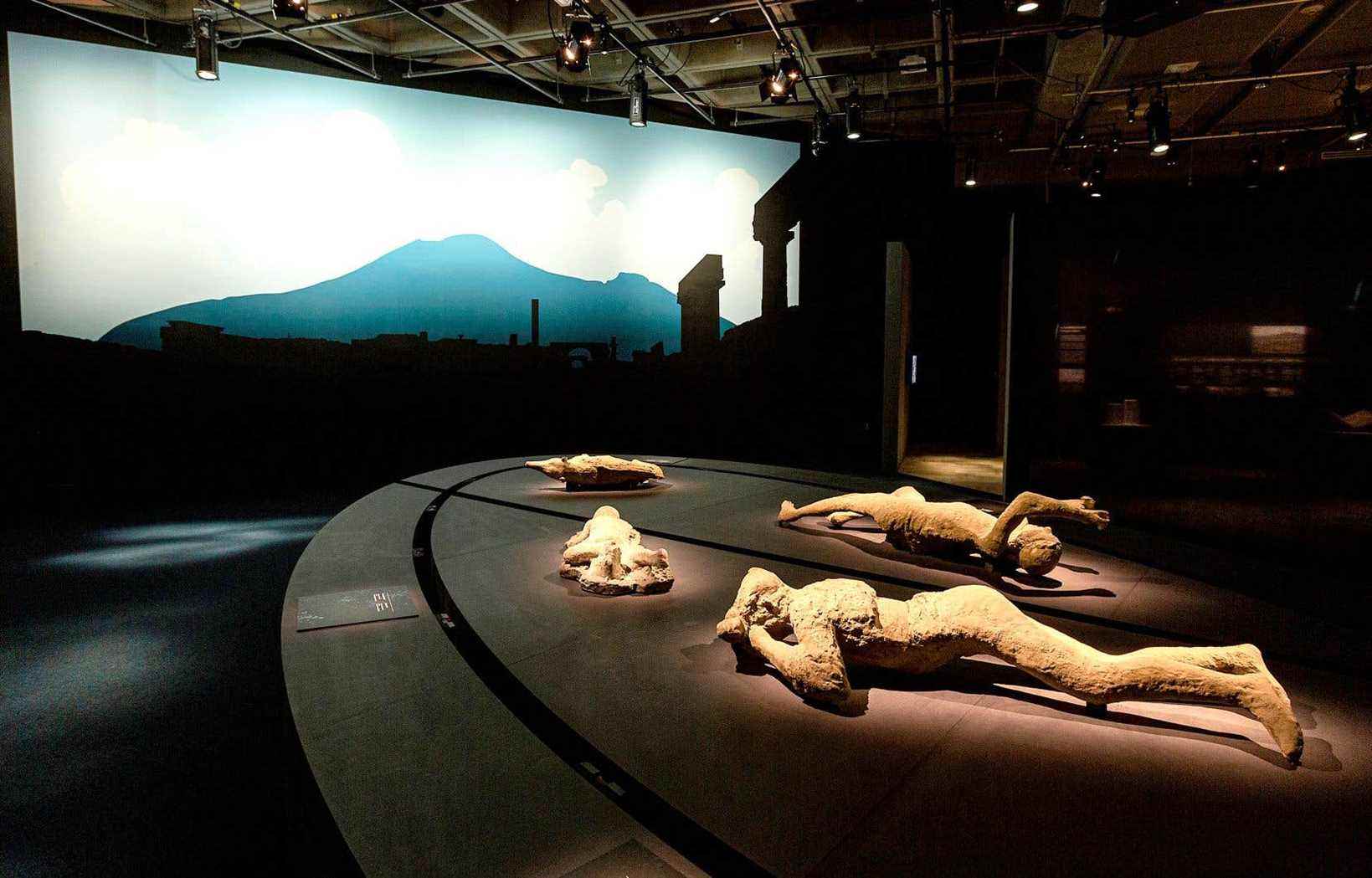With its exhibition Pompeii. Immortal city, Which took the poster Thursday, the Musée de la civilization de Québec literally projects us to Pompeii, in the year 79, and makes us live by means of a multisensory experience before, during and after ‘after this devastating eruption of Vesuvius which completely buried the city.
From the start, the audio guide that we download to our smart phone immerses us in the daily life of an illustrious family – fictitious – living in Pompeii and whose members will accompany us throughout the exhibition.
First, Caius fils, who supervises the reconstruction work of the city, which suffered an earthquake 17 years earlier, describes the work in progress, which testifies to a great mastery of construction techniques. The model of a crane made up of a wheel with a cage at its center inside which men walked to induce the rotation, and which thus made it possible to lift the heaviest stones, is an example. patent.
The renovation of the thermal baths coordinated by Caius fils also reminds us that the Romans of that time were also very advanced in terms of hydraulic installations since their towns and even their houses were supplied with running water.
Sensory immersion
The Romans also mastered metalwork, as evidenced by a magnificent brazier that was used to heat villas and keep food warm, but also that of glass, which is then used for the manufacture of dishes, containers and window panes, notes curator Lydia Bouchard.
A complete area of the exhibition is then devoted to the food of the Pompeians, which was very diversified since it consisted of the fruits of agriculture, hunting, fishing, but also breeding. The Pompeians practiced in particular the breeding of fish which were used for the preparation of the garum, this sauce which accompanied almost all their dishes. They also fed dormice in terracotta jugs, called glirarium, a copy of which can be seen. They tasted these rodents stuffed with ground pork and drizzled with honey and poppy. Besides olive oil, wine, and eggs, bread was also a staple food. Visitors will surely be amazed when they see among the 110 or so artifacts that are on display in the exhibition a petrified loaf of bread that has presumably been found in one of the 30 or so bakeries in Pompeii.
The course of the exhibition culminates in an immersive experience which makes us relive the drama experienced by the inhabitants of Pompeii in October 79. Small earthquakes felt under the feet are reminiscent of those which provoked the panic of the Pompeiians, who many fled the city. Then fumaroles, sounds of explosion and projections of fragments of lava intensify before a thick black cloud darkens the whole city. The buildings are collapsing. The incandescent ash falls continue and end up completely burying the city.
Take a step back
At the end of this dramatic evocation, visitors will be able to reflect on the casts of victims, those of a man, a woman, a child and a piglet, all frozen in a position reflecting their fear. This eruption of Vesuvius is said to have killed around 3,500 people among the city’s 12,000 residents. To date, the footprints of around 1,200 victims have been found and collected by casting. It was the archaeologist Giuseppe Fiorelli who, in 1863, had the idea of injecting plaster into the cavities formed in the ashes solidified by the corpses which then decomposed.
The casts presented in Quebec are copies of the originals. The Musée de la civilization de Québec covered the costs of making the copy of the cast of the man, which will be donated to the Pompeii Archaeological Park at the end of the exhibition. “It is a way for us to contribute to the conservation of this world heritage”, says Mme Bouchard.
At the end of the tour, an interactive non-contact table allows you to discover archaeological techniques, which have greatly evolved since the rediscovery of Pompeii in 1860. “Pompeii is the birthplace of modern archeology, which continues today. to reveal the secrets of this city ”, underlines the historian Évelyne Ferron, who will offer monthly conferences on Pompeii.
Pompeii. Immortal city was designed by the Belgian firm Tempora from artefacts from the collections of the Archaeological Park of Pompeii, the Archaeological Museum of Naples and the Galileo Museum in Florence. The Musée de la civilization de Québec, which is the only place in Canada to present this traveling exhibition, has enriched the original concept with a few additions, such as this transparent column filled with layers of ash and pumice stones which makes us concretely realize this What do these four meters of debris represent which fell on the city in 24 hours and which completely engulfed it and condemned it to oblivion for nearly 800 years.
“We have also modified the route in order to create a crescendo going from daily life in Pompeii before the disaster to the immersive show making us relive the eruption, followed by the discovery of the bodies of the victims thanks to the archaeological techniques which are described in end of the race, ”said Stéphan La Roche, President and CEO of the Musée de la civilization de Québec.
